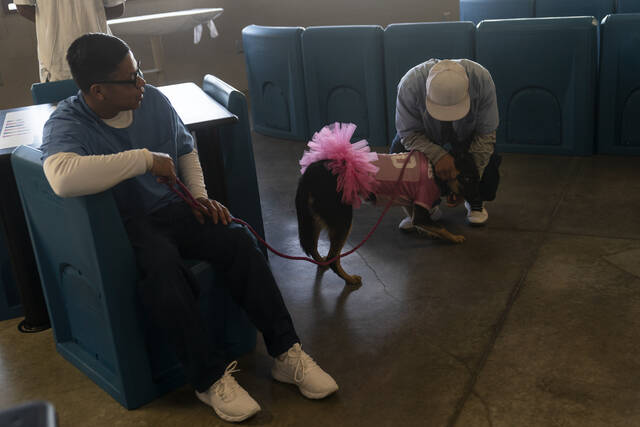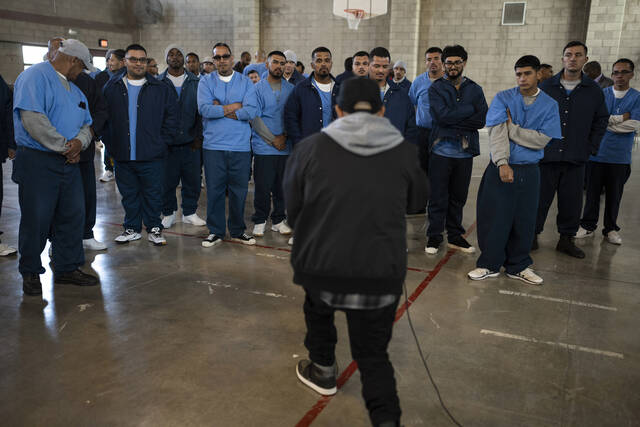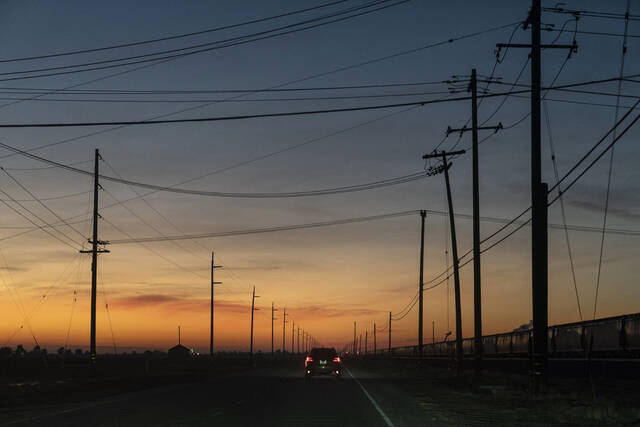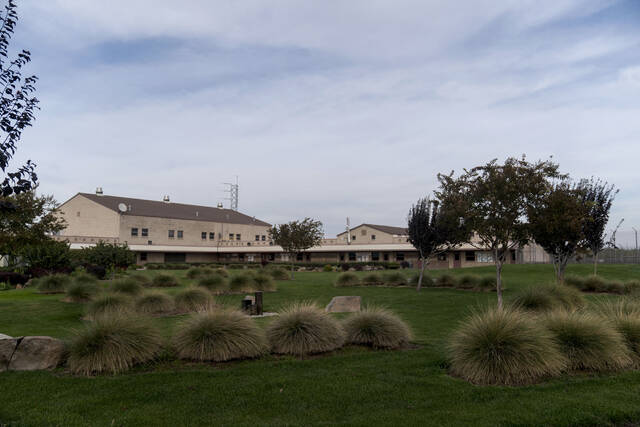Rehab on hold: covid devastated prison learning programs
CHOWCHILLA, California — Joseph Sena has spent nearly half his 27 years in prison for manslaughter. For almost as long, he’s been striving to make himself a better man than when he first arrived.
He has taken courses in creative writing, addressed his addictions, and attended school in prison, hoping to be judged fit for parole and ready to return home to Los Angeles if he ever becomes free.
But when the coronavirus pandemic hit, tearing through prisons and killing thousands, it severely disrupted or shut down the very programs prisoners most desperately need to prepare them for eventual release.
Trauma counseling, training in carpentry, masonry and barbering, and college courses were slow to adjust to pandemic learning. Isolation and uncertainty replaced creative outlets and mental health therapies, for months on end.
Sena grew depressed and anxious — he began to doubt that he’d be known for anything other than taking a life when he was 15.
He remembered the words of a poem he wrote to the man he was convicted of killing.
“I know you’re not here. I’ll remember your name. For you I will live. For us, I will change.”
He was afraid he’d never get the chance.
In a nation that incarcerates roughly 2 million people, the covid pandemic was a nightmare for prisons. Overcrowding, subpar medical care, staffing shortages, and the ebb and flow of prison populations left most places unprepared to manage the spread of the highly contagious virus. At least 3,181 prisoners and 311 correctional staff died of virus-related causes through mid-January of this year, according to a covid tracking project by the law school at the University of California in Los Angeles.
The 10 largest state prison systems suspended or severely curtailed in-person visitation for an average of 490 days before such restrictions were lifted, based on information and records obtained by The Associated Press. That meant no family visits, and no volunteers coming in to lead rehabilitation programs.
At the worst of times, prisoners said they were locked in their cells for weeks on end, their otherwise normal activities like phone calls to loved ones left up to the whims of correctional officers.
It’s hard to overstate the positive impact of educational and skills training on prisoner rehabilitation, said Margaret diZerega, who directs the Vera Institute of Justice’s Unlocking Potential initiative, which is focused on expanding college in prison. Given that 90% of people who are incarcerated in the U.S. will return to their communities, prisoner access to rehabilitative programming should matter to everyone, she said.
“We know from the research that these kinds of programs reduce recidivism rates. They improve safety in the prisons, there are fewer violent incidents, which is positive for the staff who work at the prisons and for the people who live in the prisons,” diZerega said.
A comprehensive review of in-prison education by the RAND Corporation found that prisoners who participate in any kind of courses while behind bars are up to 43% less likely to commit more crime and return to prison.
Education and rehabilitation programs can also have a positive impact on a prisoner’s parole eligibility. Many parole commissioners balance the earning of diplomas and certifications in a trade with prisoners’ record of good behavior, criminal history, and potential input from victims of the crime, among other factors.
Corrections officials told the AP they remain committed to making the rehabilitation programs available.
Some prisons expanded mail correspondence learning for prisoners in GED or college programs and introduced learning via mobile tablets where they could. They required masks and distributed hand sanitizers for prisoners and staff, tested and isolated covid-positive prisoners, encouraged social distancing where possible.
Sena was recently transferred to a medium security facility closer to his mother and younger sisters in Los Angeles, which he sees as an encouraging sign on his journey.
He said he held onto lessons he learned from InsideOUT Writers, an arts-based healing program that helped him pen the poem to his victim.
He wants to make something of his life, and he credits the prison programs for helping him find a sense of purpose and inner peace.
“My teacher from InsideOUT Writers told me it’s not about becoming a new person — it’s finding the person that you really are,” he said. “I want to find Joseph, the little kid that loves everybody, who was curious and loved to hug people, and loved to see people smile. That’s the Joseph that I want back.”
Remove the ads from your TribLIVE reading experience but still support the journalists who create the content with TribLIVE Ad-Free.






